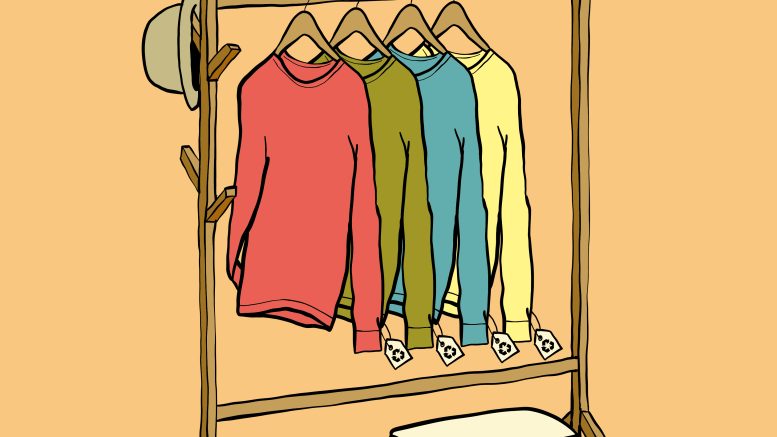At an estimated US$2.5 trillion in global market value, the fashion industry is one of the largest in the world.
In the last 20 years alone, the amount of new clothing bought by consumers has increased by 400 per cent, with around 80 billion new garments purchased annually.
This increased demand for clothing is accompanied by environmental problems that clothing production exacerbates, such as wastewater pollution. In addition, the fashion industry accounts for more global carbon emissions than all international flights and maritime shipping put together.
The overconsumption of clothing has become the norm because of rapidly evolving fashion trends and the popularity of fast fashion. For the sake of our planet, this can’t go on.
We need to be more mindful and intentional in our approach to buying clothes in order to curb our overconsumption.
One way to do this is to invest in sustainable fashion, which is the practice of producing apparel while considering the effects that fashion production has on society, the environment and the economy. It may also be referred to as ethical fashion or eco-fashion, and requires companies to take actions like offering a living wage, using environmentally friendly materials and providing better, healthier workplace conditions for employees.
These practices come at a cost, which makes sustainable fashion brands and products expensive. However, in my opinion, sustainable fashion is worth the investment. Buying sustainable garments means that you are paying for longevity, since sustainable clothing is often well made, uses higher-quality materials and is intended to last.
Fast fashion, on the other hand, specializes in rapidly producing trendy clothes of lower quality to keep buyers buying. Although these clothes are cheaper in price and you can buy more for your dollar, they aren’t built to last as long and will end up costing you more in the long run. If you buy a $15 dress from a fast-fashion retailer like Shein, you will constantly buy new dresses to replace those that don’t survive more than a few washes.
Prioritizing quality over quantity is one conscious way to reduce your carbon footprint. So, if you are financially able to purchase and support sustainable brands, I encourage you to do so. However, an affordable way to be an environmentally conscious consumer is to donate and shop second-hand.
Annually, 85 per cent of all textiles end up in landfills, and every second, enough clothing is burned or discarded in landfills to fill one garbage truck. Opting to donate or thrift is one way to keep clothing items out of landfills, where they could sit for hundreds of years, and put them into the hands of new owners instead. Partaking in clothing swaps where you can exchange clothes with other people is another way of recycling clothes.
Shopping sustainably also means being intentional about the clothes you buy and buying for functionality. You can be an intentional consumer by thinking about how a potential item will function or serve your pre-existing wardrobe. This means asking yourself if you really need another white t-shirt when you have seven others at home. It’s about being conscious of the choices you make when you visit a mall or your favourite online shop.
One last way to be more sustainable is to build a sustainable wardrobe. Simply stated, this means creating a functional wardrobe full of clothing essentials or basics that are tailored to you and your personal style, and that you love and will wear not just this season, but the next season too. You don’t need to buy multiple coats every year to follow new trends if you have one or two that last and that you can’t wait to wear come winter.
A sustainable wardrobe is a timeless wardrobe that will last for years. Buy clothes that you absolutely love, will continue to love for decades to come and that you can pass on to your children or grandchildren.
I urge people to be more mindful and intentional about the clothing they buy and the choices they make to practise sustainability. Buy sustainable brands if you can, go thrifting, donate your clothes, participate in clothing swaps and build a timeless wardrobe that works for you.





